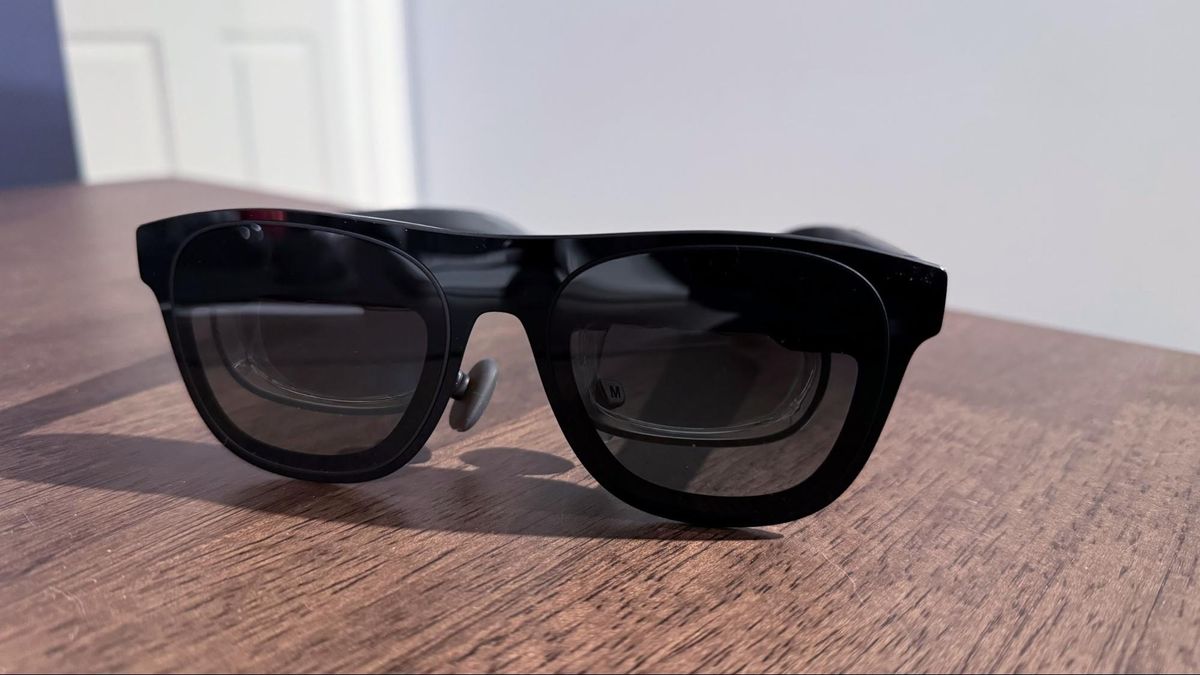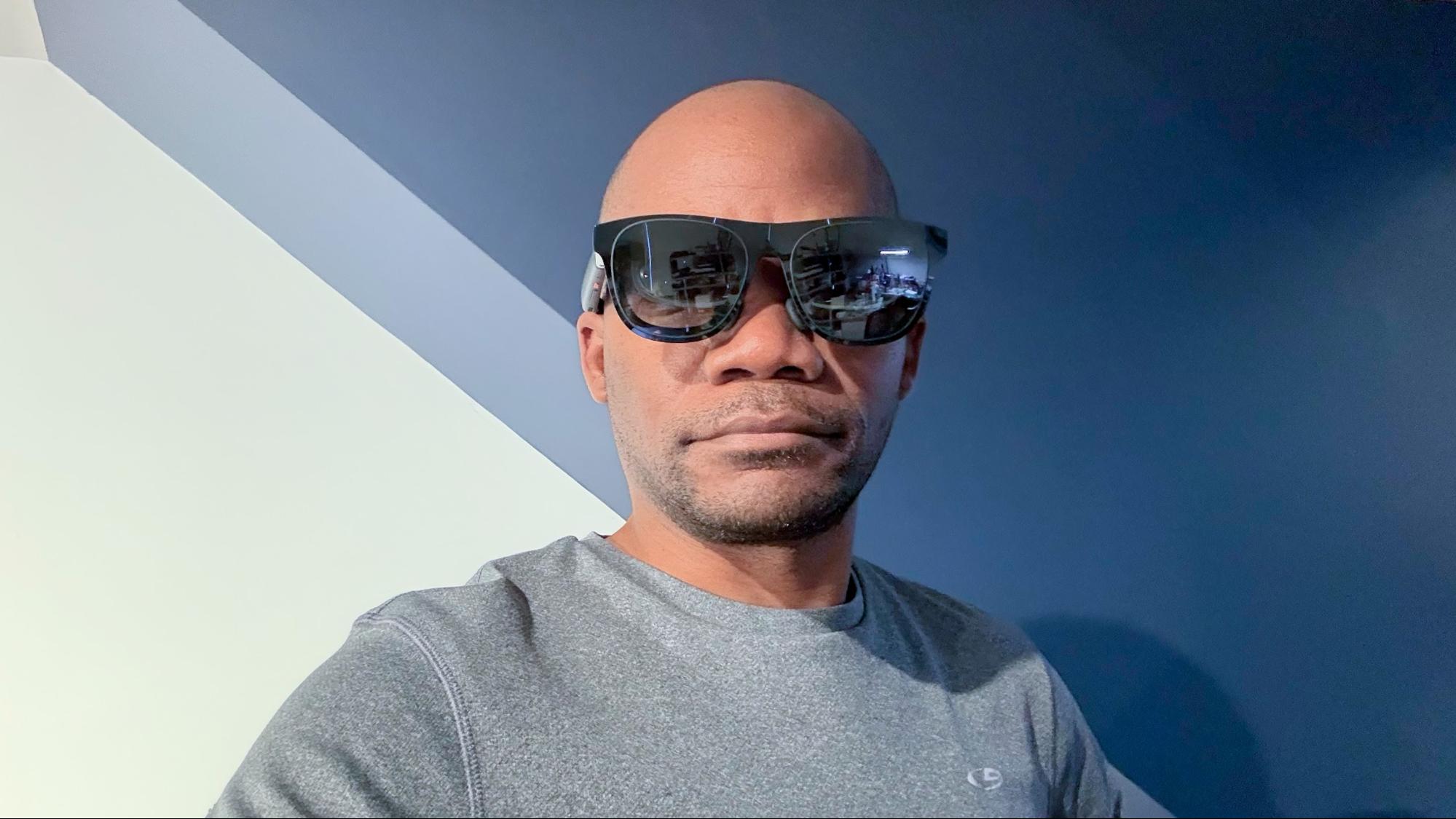Xreal is back at it again with another set of augmented reality glasses. Today, the company officially announced the new One Series, the company’s most ambitious effort yet in the AR space. The One Series encompasses two products: the One and the One Pro.
At the heart of the One Series is a brand-new spatial computing co-processor, the X1, developed in-house by Xreal. According to the company, the new chip allows for smoother playback thanks to a low motion-to-photon (M2P) latency of 3ms when the glasses operate at 120Hz (according to Xreal, the typical industry measurement is around 20 ms). The company also touts its superiority over the $3,500 Apple Vision Pro, which has a 12ms M2P.

A lower M2P means you shouldn’t see any motion blur or visual lag, whether you’re using anchored or follow-screen modes. If you need a refresher, anchored mode is where the picture displayed to your eyes within the glasses stays stationary in front of you, even if you move your head from side to side or up and down. The follow mode is when the picture follows your head movements. So, if you look left or right, the picture moves and keeps up with your head tracking. The One Series can switch between these two modes using the red button on the bottom of the right arm of the glasses.
As with previous Xreal AR glasses, the One Series features two 1080p displays, giving you a full 32:9 aspect ratio for viewing content. On the Xreal One, you get a 50-degree field of view, giving you a nearly 21 percent greater viewing area than the preceding Xreal Air 2 I reviewed last year.
The Xreal One Pro goes one step further by using a new flat-prism lens design, 40.9 percent thinner than the birdbath designs used in traditional AR glasses. As a result, Xreal improved the field of view to 57 degrees while producing a viewing area that is 63.6 percent larger than the Xreal Air 2. There’s also a standard electrochromic dimming feature on both glasses, which automatically darkens the outside lenses when viewing content (such as movies or TV shows) to block outside light. This saves you from lugging around a set of removable plastic light blockers.
Customization is also a big priority with this new generation. While the Xreal One features a fixed interpupillary distance (IPD) with further adjustments made in software, the Xreal One Pro will be available in two sizes to ensure a proper fit for a broader range of people. Xreal will offer a SKU that covers IPDs of 57 to 66mm and another SKU to cover 66 to 75mm. You just pick the one that fits within your range at the time of purchase.
Further adjustments can be made (with both the Xreal One and One Pro) to adjust the vertical height of the IPD using on-device buttons. Further settings can also be manipulated in software, like screen size/distance, brightness, and temperature. Speaking of brightness, the Xreal One tops out at 600 nits, while the Xreal One Pro ups that figure to 700 nits.
Specifications
| Header Cell – Column 0 | Xreal One | Xreal One Pro | Xreal Air 2 |
|---|---|---|---|
| Display | 1920 x 1080 per eye (3840 x 1080 total) | 1920 x 1080 per eye (3840 x 1080 total) | 1920 x 1080 per eye (3840 x 1080 total) |
| Display Type | OLED | OLED | OLED |
| Brightness | 600 nits | 700 nits | 500 nits |
| Field of View | 50 degrees | 57 degrees | 46 degrees |
| Degrees of Freedom | 3 DoF | 3 DoF | 3 DoF |
| Audio | Dual open-air speakers (Bose-tuned) | Dual open-air speakers (Bose-tuned) | Dual open-air speakers |
| Connectivity | USB-C | USB-C | USB-C |
| Weight | 84 grams | 87 grams | 72 grams |
Xreal also put the glasses through a thorough redesign, using magnesium alloy for the front shell (which houses the optics and displays). The front frame of the glasses is removable, allowing you to change the design to match your fashion tastes. Xreal says that the Xreal One weighs 84 grams, while the Xreal One Pro is slightly heavier at 87 grams. For reference, the Xreal Air 2 weighs 72 grams.
The One Series continues to feature open-air speakers, but Bose has tuned them to amplify the listening experience. One welcome addition missing on recent Xreal headsets is a front-facing 12MP camera that can capture up to 1080p video at 60 fps. The camera allows you to capture first-person pictures and videos while staying “in the moment” in a way you can’t if you have a smartphone in front of your face to capture the same footage. Audio for video footage is captured using four microphones.
The new Xreal One and One Pro are currently available for preorder, priced at $499 and $599, respectively. The former will ship later in December, while Xreal says that the latter will arrive in early 2025.
First Impressions
While I can’t post my full review just yet, I can give you a brief hands-on with an Xreal One review unit I received. While the firmware running on the glasses isn’t finalized for production (an OTA software update is incoming), I was impressed with the setup tutorial that Xreal provides. When you first plug the glasses into a device using the included USB-C cable, a tutorial runs you through the basic buttons/controls how certain features work, and gives you an overview of the menu system.
The increased field of view and viewable area is immediately noticeable compared to the Xreal Air 2, and a brief test of the speakers proved positive. The glasses are noticeably heavier than the Xreal Air 2, but the added heft wasn’t objectionable after a 15-minute test drive with YouTube and Disney Plus (yay for Deadpool and Wolverine).
Stay tuned for our full review of the Xreal One in the coming weeks.














